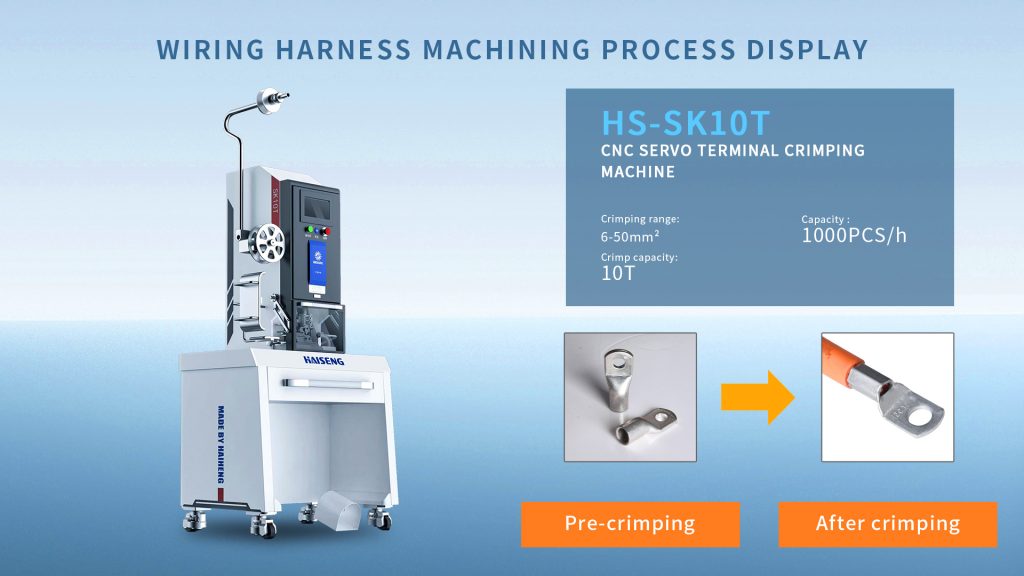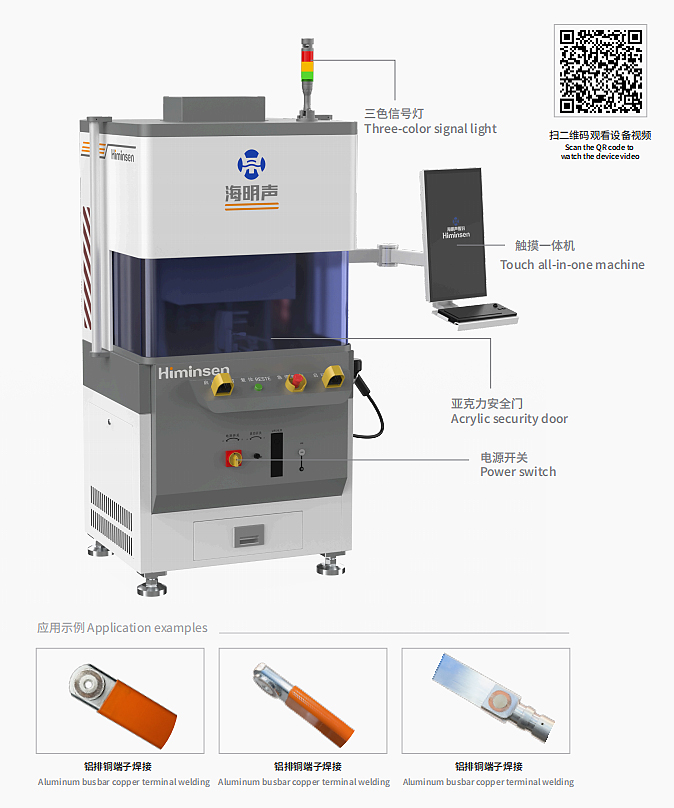
I. Preparation Work
- Equipment Inspection: Conduct a comprehensive inspection of the appearance, component connections, electrical system, and hydraulic or pneumatic system.
- Material Preparation: Prepare terminals with matching specifications and of qualified quality as well as preprocessed wires.
- Parameter Setting: Set parameters such as crimping pressure, height, and speed according to the specifications of the terminals and wires.
II. Positioning of Terminals and Wires
- Terminal Placement: Place the terminals on the positioning fixture or have them delivered in place by an automatic feeding device.
- Wire Insertion: Insert the wire accurately into the terminal hole with the help of a guiding device to ensure proper placement.
III. Crimping Operation
- Start the Crimping Program: Start it through the control panel, and the CNC system controls the crimping mechanism according to the parameters.
- Crimping Process Control: The crimping mechanism presses down at a set speed. The pressure is monitored by a pressure sensor and regulated by the CNC system. An alarm will be triggered and the operation will stop in case of abnormal pressure.
- Confirmation of Crimping Completion: After reaching the set crimping height, maintain the pressure for a while. After that, the mechanism returns to its original position, ready for the next crimping operation.
IV. Quality Inspection
- Visual Inspection: Check the deformation, cracks, burrs of the terminals and the condition of the wires. The connection should be tight and smooth.
- Tensile Test (Optional): Measure the axial tensile force as required to ensure that the connection strength meets the standard.
- Electrical Performance Test (Optional): Measure the contact resistance when necessary to ensure good electrical conduction.










0条评论